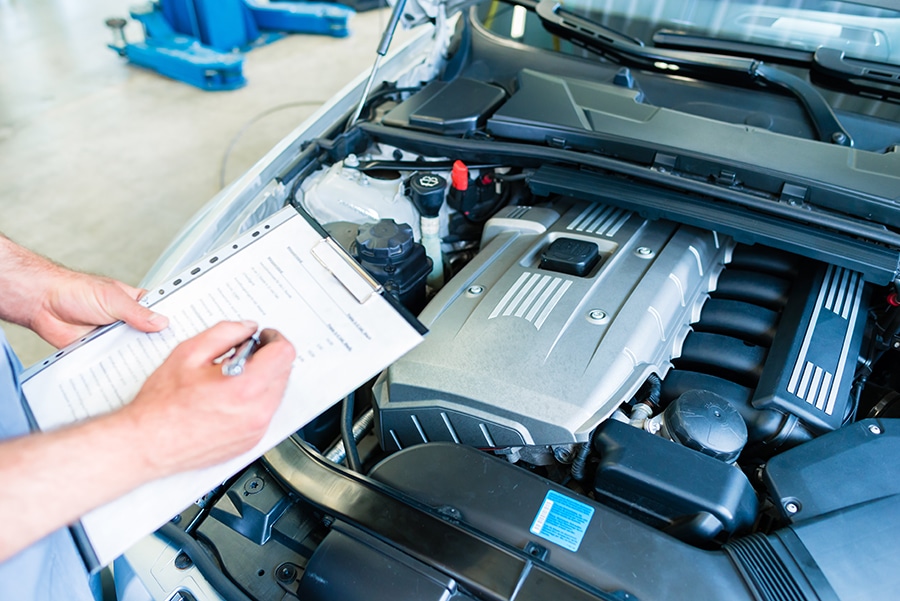Car maintenance is the most important part of owning a vehicle. When you don’t take care of the basics, you run the risk of having much bigger problems down the line. Always be sure to check your tires, fluids, and electrical systems on a regular basis, especially before a long trip. Most of the issues that pop up for car owners can be easily fixed when they care caught early. Best of all, catching a minor issue before it becomes a major problem will cost a lot less to fix.
Here is a car maintenance checklist for any vehicle owner:
Tires
As the only part of the car that hits the road, your tires have to be in great condition at all times. Most vehicles require the tires to be inflated to 35 psi for best performance, and the spare tire inflated to 60 psi. It’s good to check the tread depth, too. If the treads are wearing down, it may be time to get some new tires, which should be swapped every 50,000 miles. Also, be sure to get a rotation every 6,000 to 8,000 miles, as the tires do not wear out evenly if they stay on the same side of the car for too long.
Oil
One of the most important fluids in the car is the engine oil. Whenever you get an oil change, the shop will provide a sticker on your windshield telling when you need another oil change, typically every 3,000 to 5,000 miles. Older cars and high-performance vehicles may need specific types of high grade oil, so be sure to check your user manual or ask a mechanic.
Check the oil every few weeks with the dip stick provided under the hood. Just wipe off the stick, put it back in and pull it back out to see the oil level. You can also see the oil color at this point, and if it is very dark, you probably need an oil change.
Transmission Fluid
This is a fluid that many people don’t think about, but it is essential to a smooth ride. If you find your car struggling to switch gears, always grinding loudly when speeding up before shifting, you may need a transmission flush. Unfortunately, this is usually not a job that can be done at home because most manufacturers build the system so that only the pros can reach the reservoir and flush the system with special tools. Luckily, transmission fluid is rarely needed and you can go the life of your car without needing more. However, if you are having trouble shifting, it is worth looking into.
Gas
Possibly the easiest and most obvious part of car maintenance is having gas in the tank. Every car comes equipped with a dial that shows how much gas is remaining, and many newer models will show a readout estimate of how many miles left before running out.
Depending on the type of car, you may need higher grade gas in order to see peak performance. It is also a good idea to pump “Top Tier” gas from time to time, as gas stations with the “Top Tier” logo have been tested and proven to provide better performance and engine leaning agents in their gas.
Battery
Most aspects of a car operate on mechanical parts, but there’s an entire electrical system doing its part, too. If your car has trouble starting, the lights seem dim or the internal controls don’t seem to work properly, you may need a new battery. Luckily, they are easy to find and install on your own.
If you think you need a new battery, it’s best to check with an automotive store first. They usually have a tool that can test the wattage and voltage of your battery to determine if your problems are related to the battery. Sometimes you just need a battery charging device, or you may have an issue with another part of the electrical system.
Spark Plugs
Another major part of the electrical system in the spark plugs. These work directly with the battery and engine to get things started when you turn the key. If your car is having trouble starting, it could mean you need new spark plugs. They tend to last 30,000 miles before needing replacing and can be installed on your own or by a mechanic.
Windshield Fluid
Another easy part of car maintenance is replenishing windshield fluid. If you try to splash the windshield and nothing comes out, you may need more fluid. Typically, there is a reservoir under the hood on the far left or far right side for windshield fluid.
Air Conditioning
The Air Conditioning system is key to a comfortable ride. If your AC is not blowing cool air, you may need a recharge, which can be done at a shop or with the right tools at home. If a recharge does not work, there may be a problem with the compressor, which is a larger job that typically must be done by a mechanic.
Most importantly, be sure to pay attention to any warning lights in your car. There are a wide range of lights that can tell you what’s wrong with your vehicle, making it easy to figure out the problem right when it begins. Most automotive stores can check the internal vehicle system and obtain a code for the exact issue, providing you with information on exactly what you need to do.
Keep up with your vehicle’s maintenance as much as possible. The earlier you catch a problem, the less of a headache it will be.

